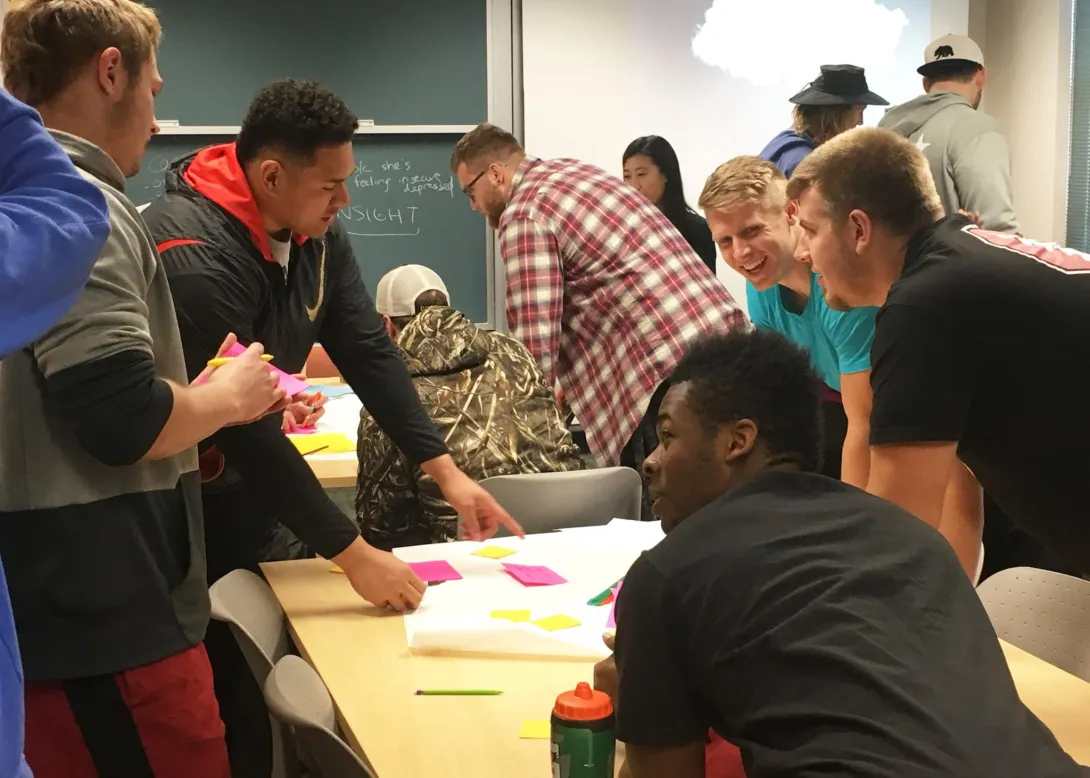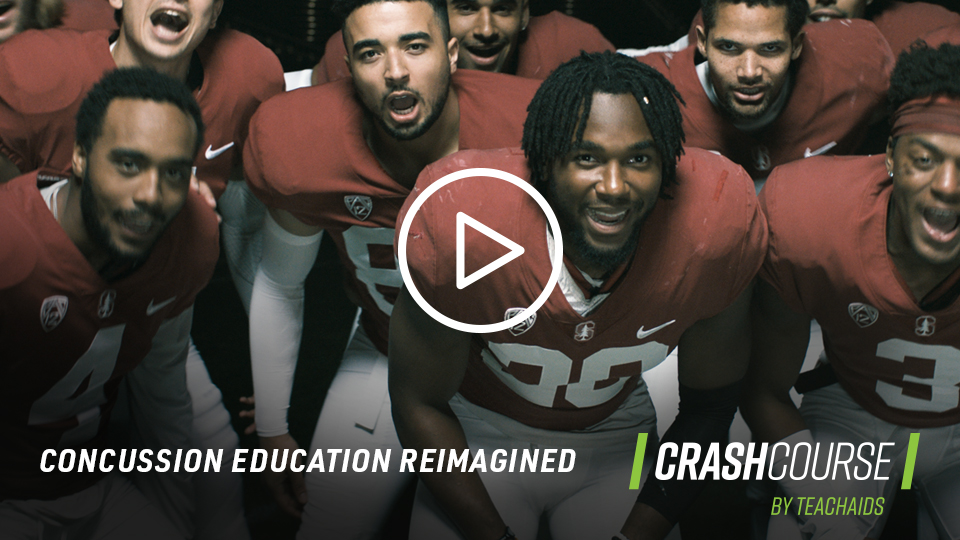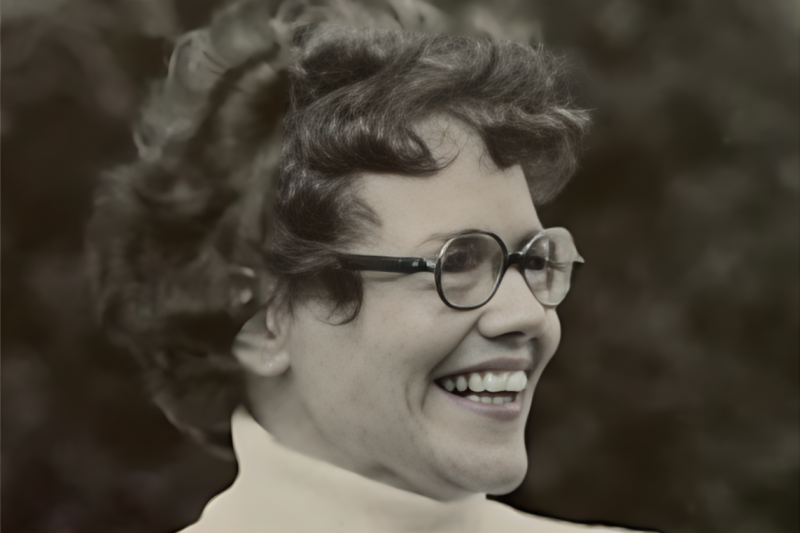
Rethinking concussion education for a new generation of athletes
Brandon Simmons, a captain for the Stanford Cardinal football team, remembers sustaining his first concussion during a high school game in Arlington, Texas.
“I was heading off the quarterback, and my nature as a football player is really physical—I love to hit,” he said. “It was a loud collision, and everyone in the stands went, ‘Oooooh.’ It was a good play—normally I would’ve been hyped about it.”
But something felt off. “It was such a hard hit that the face mask on my helmet was bent, and my head was ringing,” he said. “I knew something wasn’t right, but I didn’t know what it was.”
He finished the game—a risky move that likely increased his chance of further injury, he realizes now. But at the time he didn’t know enough to recognize the signs of a concussion or the potential consequences.
Earlier this year, by enrolling in an undergraduate course through Stanford’s Graduate School of Education (GSE), Simmons joined a groundbreaking effort to change the way high school athletes learn about concussion risks and symptoms. He and hundreds of students and faculty across the university are collaborating with TeachAids, a Palo Alto nonprofit, to develop new concussion education tools using virtual reality, 3D animation and other promising learning technologies.
The first module of the new curriculum, called CrashCourse, was released on September 8 at the USC-Stanford football game.

A new approach
CrashCourse marks a major departure from traditional concussion education materials—not only for its high-tech approach but also for the arduous testing and human-centered design research behind it.
“Our experts evaluated major concussion education programs available to the public,” said Piya Sorcar, MA ’06, PhD ’09, founder and CEO of TeachAids, which grew out of her graduate work at the GSE in learning sciences and technology design. “Even in states where concussion education is mandatory, the materials might consist of PDF fact sheets, a one-page website, or PSA posters in a locker room,” she said. “And most programs were not evidence-based or pedagogically grounded.”
One in five high school athletes in the United States will get a concussion, a study in the Journal of the American Medical Association reported last year. With proper treatment, most will recover within days or weeks, according to the Centers for Disease Control and Prevention.
But studies show that as many as 55 percent fail to notify their coach or another adult of the injury. A third who sustain a concussion return to play in the same game, other research has found.
“There’s a huge move forward in concussion awareness, but that isn’t translating into attitude and behavior change,” said Christine Chen, a human biology major at Stanford who wrote an undergraduate honors thesis on concussion education and has worked as a research assistant for TeachAids.
Sorcar and her team set out to learn why existing concussion education didn’t seem to be working—and joined with Stanford to create a new curriculum that would.
Identifying the gaps
Sorcar has taught a course at Stanford on designing research-based health education initiatives since 2012. Last year she led a new undergraduate research seminar on concussion education through the GSE. The class evaluated what GSE researchers considered the “most robust materials” available in the public domain.
“I would say 90 percent of them were boring,” said Alameen Murphy, a team captain for the Stanford Cardinal who enrolled in the research seminar. “If you were a high school student and your coach made you look at it, you would just do it and be done with it.”
Many materials, they found, were targeted at the adults in students’ lives—coaches, parents, teachers—not at students themselves. Information that was directed at student athletes often featured doctors, trainers and coaches and used medical jargon to communicate information, alienating their young audience.

A hands-on course at the GSE had Stanford undergraduates designing and field-testing new concussion education tools for high school students.
“You’ve got an age group that’s a little recalcitrant to the normal authorities. You can’t tell them, ‘You have to listen to this.’ You need to draw them into the material."
—Shelley Goldman, associate dean at Stanford Graduate School of Education
Hands-on teaching
In January, Sorcar teamed up with Shelley Goldman, an associate dean at the GSE, to teach a hands-on course that had students helping to design and field-test tools for a new curriculum on the subject.
Goldman has been teaching curriculum design at the GSE for decades, with a special interest in using technology to support learning. The topic of concussions was new to her, but the educational challenges were familiar.
“You’ve got an age group that’s a little recalcitrant to the normal authorities,” said Goldman. “You can’t tell them, ‘You have to listen to this.’ You need to draw them into the material. You’re taking complex information and making it learnable by the way you structure it and offer the experience—whether that’s through the technology that you use or the messengers who deliver the information.”
In September, the first component of CrashCourse was launched: an interactive, high-definition video that puts viewers on the field during a football game, where they experience firsthand what it’s like to suffer from a head injury and choose whether to stay in the game or sit out. (“The story forks, depending on which option the learner selects,” said Sorcar. “It’s like a Choose Your Own Adventure.”)
The video also features Cardinal players, including running back Bryce Love, who explain how to recognize and treat a concussion—using language and metaphors that resonated with young athletes during extensive field-testing.
“Our research showed that to educate effectively about concussions, the curriculum needed to be delivered through voices that youth admired and trusted,” said Sorcar. “The students were adamant that the content should not be delivered by doctors, teachers or coaches. It needed to come from a ‘near peer’ source not viewed as a disciplinarian—ideally, someone who was relatable and had overcome similar challenges to what the students faced.”
In the coming months CrashCourse will expand with the release of an interactive virtual reality component of the curriculum, along with several other modules:
- A symptom simulator, which uses virtual reality to help students recognize the signs of a concussion and empathize with those who have experienced similar injuries
- A brain fly-through using a 3D representation of an actual brain, to help students better understand its complexity and appreciate its vulnerability
- A series of short videos featuring high-profile athletes to complement the information provided by near-peer sources
To assess the effectiveness of the new curriculum, GSE Assistant Professor Prashant Loyalka is directing two randomized controlled trials of thousands of football players at high schools across the United States. The studies will measure changes in the players’ attitudes and behaviors after they participate in either CrashCourse or one of three other major concussion education programs.
Jennifer Wolf, a senior lecturer at GSE who specializes in qualitative research, worked with the team to gain a deeper understanding of students’ experiences with different interventions. GSE Professor Roy Pea, a leading authority on learning and technology, also played a critical role in the research and advised extensively on ways to optimize the impact of techniques and new media like virtual reality.
Beyond giving student athletes information for their own well-being, Sorcar said, the immersive technology is designed to build empathy for what is largely an invisible injury. The Cardinal’s Alameen Murphy said he sees that potential.
“This protocol isn’t just good for people who get concussed, it’s for teammates who play with people who get concussed—so they can step up and say, ‘Hey, it’s more important for you to be OK years down the line than to finish this game,’ ” Murphy said. “When I was in high school, I might not have had the courage or the knowledge to do that. I’m way more equipped to do that now.”
Seed funding for CrashCourse was provided by the Taube Stanford Concussion Collaborative.
Piya Sorcar and Shelley Goldman joined GSE Dean Dan Schwartz and Senior Lecturer Denise Pope in the studio for an interview on School's In, a half-hour radio show that airs weekly on SiriusXM Insight Channel 121. Listen from the link below. You can also watch watch video of part of the studio recording.
Faculty mentioned in this article: Shelley Goldman , Roy Pea , Prashant Loyalka , Jennifer Wolf




